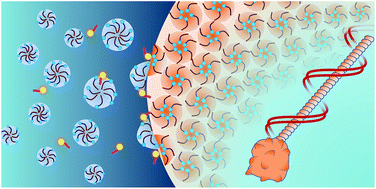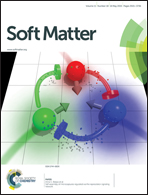Structure and growth behavior of centimeter-sized helical oleate assemblies formed with assistance of medium-length carboxylic acids†
Abstract
The nonequilibrium organization of self-assemblies from small building-block molecules offers an attractive and essential means to develop advanced functional materials and to understand the intrinsic nature of life systems. Fatty acids are well-known amphiphiles that form self-assemblies of several shapes. Here, we found that the lengths of helical structures of oleic acid formed in a buffered aqueous solution are dramatically different by the presence or absence of certain amphiphilic carboxylic acids. For example, under the coexistence of a small amount of N-decanoyl-L-alanine, we observed the formation of over 1 centimeter-long helical assemblies of oleate with a regular pitch and radius, whereas mainly less than 100 μm-long helices formed without this additive. Such long helical assemblies are unique in terms of their highly dimensional helical structure and growth dynamics. Results from the real-time observation of self-assembly formation, site-selective small-angle X-ray scattering, high-performance liquid chromatography analysis, and pH titration experiments suggested that the coexisting carboxylates assist in elongation by supplying oleate molecules to a scaffold for oleate helical assembly.


 Please wait while we load your content...
Please wait while we load your content...